A Placemaking Journal
Finally Thinkin’ Small: But can we build on what we’ve learned?
As soon as the destructive path of Hurricane Sandy became evident, I got emails and calls from colleagues who, like me, worked in disaster recovery situations on the Gulf Coast. When the clean-up gets underway, could this be an opportunity for the Eastern Seaboard states to apply some of the rebuilding lessons of the Gulf after Katrina? Is there a role for Katrina Cottages?
Well, sure. If there’s one upside in the succession of devastating weather events over the last decade, it’s the opportunity to build on lessons learned. Time between disasters dulls response capacities; shorter gaps refine best practices. And for my money, no lessons are worth more than those connected with the evolution of sustainable neighborhood design.
I can’t imagine anyone connected with post-disaster planning not already familiar, at least to some degree, with housing innovations born out of the Mississippi Renewal Forum or the work of the Center for Planning Excellence in southeastern Louisiana. But here are a couple points I think worth stressing as the recovery frenzy begins in the Northeast.
First of all, this irony: The housing bust, the Great Recession and some major demographic shifts are likely to force a faster adaptation to reality in 2012 than in 2005. When Katrina hit, the housing and growth bubbles were expanding big time, and expectations — demands even — for a “return to normal” imagined a recovery that recaptured the delusions.
Convincing communities to accept revamped flood maps, to acknowledge risks identified and quantified by the insurance industry, to change building and zoning codes to guide safer redevelopment, to rethink infrastructure investment priorities in light of environmental vulnerabilities and to encourage more realistic housing choices — all of those discussions took years to gain traction in even the most enlightened communities. And in many places, the forces of denial won out.
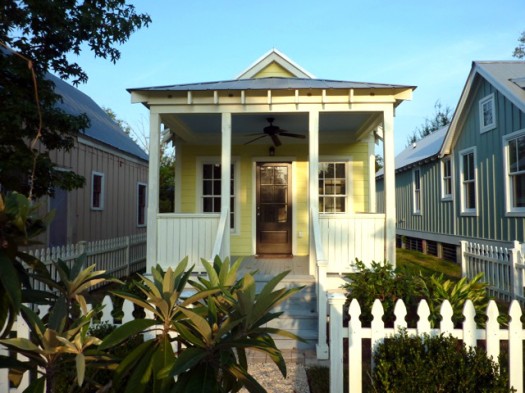
In the case of Katrina Cottages — conceived as an immediate solution to the toxic FEMA trailer problem, then as a way to seed resilient, affordable neighborhoods — the pushback was immediate and long lasting. Despite an unusual deal struck with the Feds to supply thousands of the cottages for free, many local communities outlawed them. Why permit these little things on small lots when we’ll get back to cranking out McMansions as soon as things get back to normal?
These days, as we claw our way out of the Great Recession, that sort of thinking sounds ludicrous. Even before the downturn, there was a certain demographic inevitability to downsizing. Chris Nelson, head of the Metropolitan Research Center at the University of Utah, has been showing us charts for years, demonstrating how out of balance we are in the attempt to match housing inventory with future housing demand. Reporting on a panel that featured Chris and Shyam Kannan, director of the economic development practice at Robert Charles Lesser & Co., at the New Partners in Smart Growth conference in San Diego in February, Roger Showley of the San Diego Union-Tribune pointed to Chris’s estimate that there’s a need for 10 million more attached homes and 30 million more small homes on 4,000-square-foot lots or less. That translates to about 10 units to the acre, unthinkable in many residential settings.
But change is coming. Consider this October 22 piece on new housing realities in the Huffington Post. And examples of communities responding to such realities are multiplying.
Even before Sandy figured into the conversation, New York City was inviting proposals from designers and developers for ways “to create additional choice within New York city’s housing market.” The city’s Department of Housing Preservation and Development issued an RFP that acknowledged a gap of some 800,000 units between demand and current supply of studios and one-bedroom units.
In a much smaller metro area, the City of Greenville, South Carolina, issued an RFP this summer calling for proposals to introduce “pocket neighborhoods,” a cottage neighborhood term popularized by Pacific Northwest architect Ross Chapin, into a community planning project. In Martin County, Florida, the community development department under Kev Freeman is undertaking what might be one of the most ambitious efforts yet to fully integrate coding and infrastructure planning with mixed-use cottage neighborhood strategies.
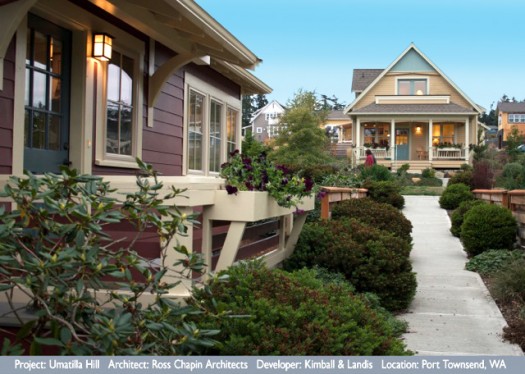
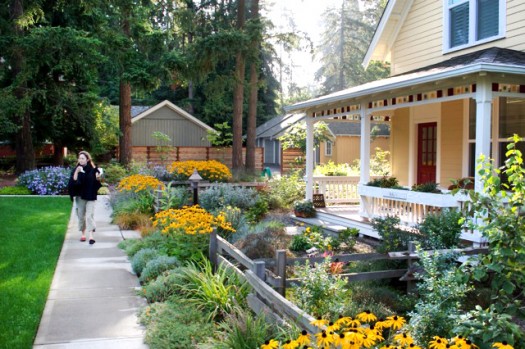
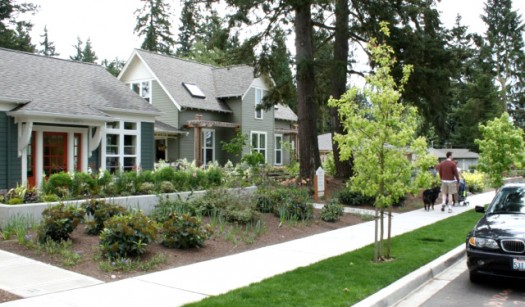

There are still lessons to be learned from the post-Katrina experience. Even with a New Normal imposed by the economic downturn, it’s taken years for wishful thinking to loosen its grip on policy-making on the Gulf Coast. Credit the ever-persistent Ocean Springs, Mississippi architect Bruce Tolar for hanging in there long enough to demonstrate with real-life cottage neighborhoods the ideas pushed by Andrés Duany and his architecture team during the 2005 Forum in Biloxi.
We’ve followed Bruce’s work from the beginning. Check out this for an overview in 2011 and this one earlier this year that talks about ways in which cottage neighborhood strategies address the needs of communities beyond the storm zone.
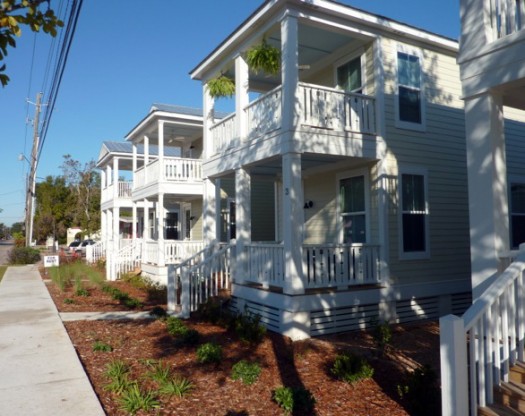
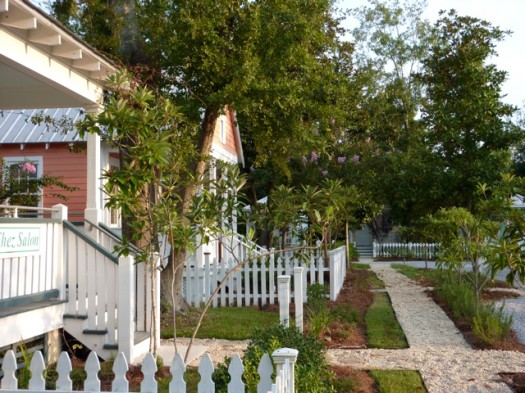
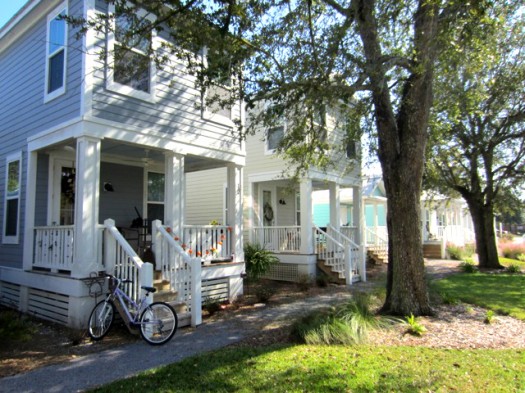
That gets us to the second point: For the build-back-better cottage solution to gain traction fast, communities have to enable — and maybe incentivize — cottage neighborhood models that hit all the buttons — safety, energy efficiency, affordability, transit-oriented convenience and pride-inspiring aesthetic appeal. In this crucial transition between the era of the sprawl-enabled McMansion and that of right-sized housing in compact, walkable, mixed-use environments, home owners and renters have to be rewarded for being realistic.
Bruce Tolar silenced critics in Mississippi by holding to standards that assured cottage residents the only compromise they’d be making would be in square footage — that, in fact, they’d be gaining custom design components (9-ft. ceilings, quality windows, Hardie siding) they’d never be able to afford in larger homes. Ross Chapin demonstrated home buyers would pay a premium to live in small homes in “pocket neighborhoods” if the design was right. And, of course, Sarah Susanka started the whole conversation about houses that are “not so big” in her series of books and lectures.
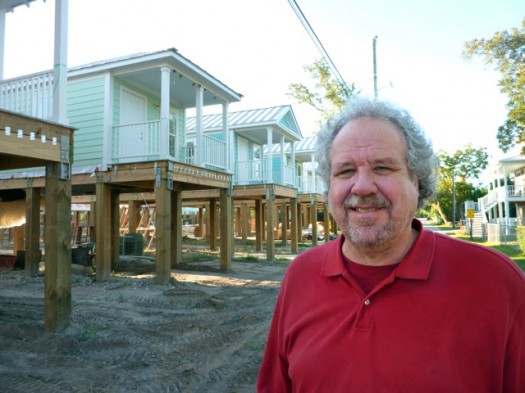

One of the biggest fears is that those who embrace cottage neighborhood solutions will cheap out. Ross has spotted what he calls “cartoon” imitations of his pocket neighborhoods, developments that get the superficial concept right but miss all the subtle design elements that reward residents and enhance the value of living in small spaces. Bruce watched developers in Mississippi take some of the same cottage units he worked into his neighborhoods and create instant ghettos by neglecting landscape design, thoughtful site planning and simple construction details.
“We have a lot to do to make the world a better place,” says Ross Chapin.
No kidding. And since this important transition in neighborhood redevelopment will be driven, at least initially, by local government policy and state and federal funding that tend to default to low-bid processes and innovation-killing bureaucracy, the journey to that better place has a few barriers to overcome.
In a future post, we’ll zero in on some of the site planning and cottage design lessons learned. But in the meantime:
Coming up on November 15, is a PlaceMakers cottage housing Placemaking @ Work webinar session that will include Martin County, Florida community development director Kev Freeman and will hit on some of these topics. And I’ll be moderating panels with Bruce Tolar and others at the Louisiana Smart Growth Summit, November 26-28, in Baton Rouge, LA and at the New Partners for Smart Growth conference in Kansas City, February 7-9.
–Ben Brown
If PlaceShakers is our soapbox, our Facebook page is where we step down, grab a drink and enjoy a little conversation. Looking for a heads-up on the latest community-building news and perspective from around the web? Click through and “Like” us and we’ll keep you in the loop.







